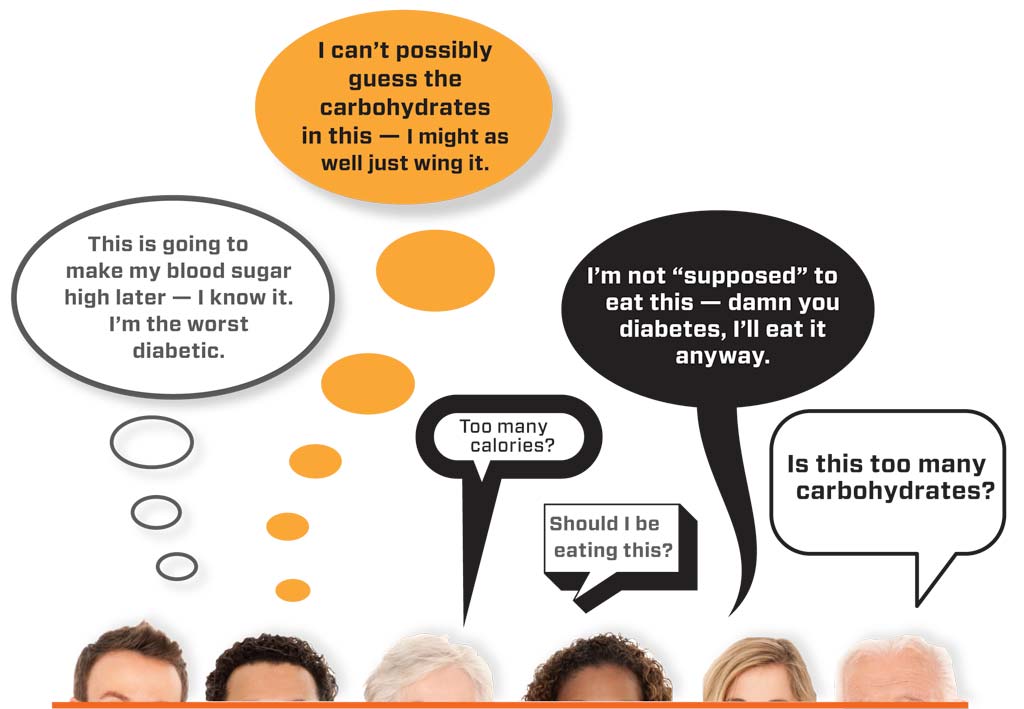Newly Diagnosed: How to Approach Exercise and Activity
Exercise can be nerve-racking for any T1D; these tips will get you through a workout with stable sugars when you are newly diagnosed

As a person with type 1 diabetes, exercising and staying active is important to increase your insulin sensitivity and decrease your risk for cardiovascular complications. But if you’ve just recently been diagnosed, fear about how your blood sugars might react may make you hesitant to return to the gym or resume active hobbies you once loved.
While it is true that exercise can increase your chances of experiencing low blood sugars (or, in some cases, cause you to go high), the benefits of activity far outweigh the risks.
You must know how to approach exercise in a way that will keep your sugars stable. The first step is to understand how increased activity will affect your body.
How Your Body Reacts to Exercise
While you might think that anything that gets your heart pumping is likely to have a similar effect on your body, the truth is that different types of exercise affect you in different ways.
As a person living with diabetes, it is important to understand the physiological processes going on beneath the surface so you can better predict how your blood sugars will react.
Aerobic Exercise Burns Glucose
For the average person, exercise revolves around the idea of getting the heart pumping and keeping your heart rate elevated for a prolonged period. Things like jogging, cycling, swimming, and even taking a brisk walk all have this effect on the heart.
These are all examples of aerobic exercise.
During these types of exercises, your body relies on glucose to fuel it. And it uses that glucose at a much higher rate than it does during periods of inactivity.
For a diabetic, that means after experiencing a consistently elevated heart rate for a period of time, your blood sugar will start to crash. If you fail to provide your body with additional glucose or reduce the amount of insulin present, your blood sugar levels will continue to drop and could become dangerously low.
(If you have questions about the best way to treat your low blood sugars, this article will help.)
Anaerobic Exercise Burns Muscle
On the other side of the exercise spectrum are anaerobic activities. These include exercises like weight lifting, sprints, rock climbing, and high-intensity interval training.
Any activity that causes your body to use more oxygen than your heart can supply via blood flow will use glycogen stored in muscle as a fuel to support this intense activity.
This is considered an anaerobic exercise.
During this type of exercise, muscle glycogen provides energy without the need for oxygen. Your body may also produce adrenaline during anaerobic activity.
Both glycogen and adrenaline are hormones that stimulate the liver to dump stored glucose into the blood, further raising your blood sugar. (Check out this article to learn more about how anaerobic exercise affects blood sugar.)
How to Approach Exercise to Keep Your Sugars Stable
One very important rule to follow when it comes to exercising as a person with T1D is to make sure your blood sugar is in-range before you begin.
Start in Range
You want to shoot for a BG between 80 and 180 before you even consider exercising.
How your blood sugar reacts once you begin your activity depends on whether you are doing aerobic or anaerobic exercises and how you prepared for your workout.
Use Food or Insulin to Prepare
For aerobic exercises, you will likely need to consume some carbs before you begin to avoid lows.
Conversely, for anaerobic exercises, you will likely need some insulin when you start to keep blood sugars down.
Here are some exercise prep ideas you may want to consider depending on your situation and how your body tends to react to activity:
Aerobic Exercise
- If you are doing a short aerobic activity such as a quick run around the neighborhood, consider eating or drinking some fast-acting carbs before you begin. If your blood sugar is on the higher end when you start, you may not need any carbs at all.
- If you are doing a longer cardio activity such as swimming laps for an hour, you will want to boost your sugars up to a higher level (if they’re not already there) before you start by consuming some simple carbs. Then, before you begin, you may want to consume something with few carbs and a lot of protein, such as a protein shake. Your body will slowly metabolize the protein into glucose as you exercise to keep blood sugars stable.
- For very long aerobic exercises, such as a difficult hike, you may have to repeat high protein or mixed carb and protein snacks throughout your workout to keep your blood sugars where you want them.
- If you are a pump user, you also have the option of raising blood sugars by utilizing a lower temporary basal. A drop in basal by 25 to 75% may be needed, based on how intense and how long the workout will be.
Just keep in mind, it takes time for insulin to peak, so always start your lower basal rate at least a half-hour before your workout.
Anaerobic Exercise
- For anaerobic activities, you may need to give yourself a unit or two of insulin before you begin to keep sugars from rising as your body releases its own glucose.
- If your sugars are on the higher end before you begin an anaerobic exercise, you may need to give a correction as well as an extra unit or two.
- Pump users can also utilize a raised temporary bolus to cover any peaks during weight lifting and other anaerobic activities. Just make sure to start this temp basal ahead of time.
Schedule Your Workouts
Because your starting blood sugar will play a lot into how your sugars look while you exercise, scheduling your workouts for periods when you are typically higher or lower can be a great approach.
- If you often struggle with high blood sugars in the morning, timing your two-mile run for right after you hop out of bed can help stabilize your sugars without the need for extra insulin.
- Likewise, if you are always going low at certain points of the day, try scheduling your gym time right before that period. Use weight lifting and high-intensity workouts to keep your sugars up.
Expect Your Blood Sugars to Change After Workouts
Exercise doesn’t just affect your blood sugars during your workouts. It can also cause changes immediately after exercise, many hours later, and in general.
Aerobic exercise is likely to send you low both right after you finish exercising and hours after your workout, often in the middle of the night. To help fight this, you’ll want to eat a decent-sized snack or meal after you’re done. You’ll also want to consider lowering your basal a few hours after your workout or overnight or eating a high-protein snack before bed.
Anaerobic exercise, in contrast, is likely to cause higher blood sugars after you complete your workout. Surprisingly, the best way to fight this is to also eat a snack or meal right after you complete your workout. That’s because the natural rise in blood sugar after anaerobic activity comes from your liver releasing more glucose to help your body replenish it’s glycogen stores. By eating a meal of mixed carbs and protein, you can feed your cells directly and stop your liver from raising your sugars on its own.
(If you need help calculating your insulin dose for complex meals, you’ll want to read this.)
Combining anaerobic and aerobic exercises in one workout is another ingenious way to keep your sugars stable.
- Ending a cardio workout with a few reps on the weight machine or a few sprints can actually activate your liver to dump glucose and help you avoid post-workout lows.
- Alternatively, ending a weight session with an extended jog around the track can help your body utilize any excess sugar in the blood. Though, you may still need a substantial snack after you’re done to replenish all the calories your body spent and avoid additional highs.
No matter how you work out, if you work out consistently, you can expect your body to become more sensitive to insulin over time. Because of this, you may see that your basal rates or bolus ratios, or both, need to be reduced.
Continue to Adapt and Change Your Approach
As much as these guidelines can help you develop a safe approach to exercise, it is important to remember that everyone is different. Your best bet is to try some of these tips and adjust them to figure out what works best for you. Keep a written or digital record and make sure to stop and check your sugars periodically during your workout. This will help you pinpoint what works and what doesn’t.
As long as you go into your workout knowing what your blood sugars are likely to do and why you’ll be able to stay one step ahead of any dangerous highs or lows while keeping your health in better check for the short and long term.







